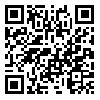Volume 7, Issue 2 (Journal OF Welding Science and Technology 2022)
JWSTI 2022, 7(2): 13-24 |
Back to browse issues page
1- , khanzadeh@iaumajlesi.ac.ir
Abstract: (5708 Views)
In the present study, the corrosion behavior and microstructural changes of 5000 series aluminum and copper sheets after the explosive welding process have been investigated. Explosive welding is performed with a fixed stop interval and change of explosive load. Dynamic potential polarization tests and electrochemical impedance spectroscopy, light microscopy, and scanning electron microscopy were used. The results of TOEFL polarization curves show that the lowest corrosion velocity was related to the sample with an explosive load of 1.5 and the highest corrosion velocity was related to the sample with an explosive load of 2.5. The corrosion resistance of a sample with an explosive load of 2.5 is less than that of a sample with an explosive load of 1.5 due to more severe plastic deformation at the joint. The metallographic results show a wave-vortexing of the joint due to the increase in the explosive charge. The results of the impedance test in welded samples showed that the value of n (experimental power parameter) decreased with wave-vortexing of the joint and the sample with 2.5 explosive load had the highest corrosion rate. Based on the results of scanning electron microscopy, it was observed that with an increasing explosive charge, the thickness of the local melting layer gradually increases.
| Rights and permissions | |
 |
This work is licensed under a Creative Commons Attribution-NonCommercial 4.0 International License. |




